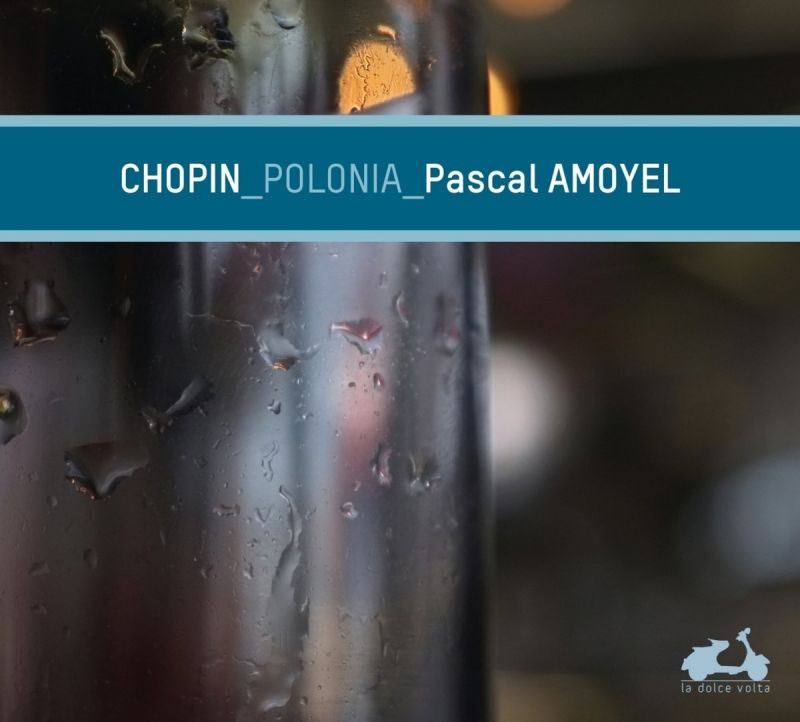CHOPIN Polonaises
View record and artist detailsRecord and Artist Details
Composer or Director: Fryderyk Chopin
Genre:
Instrumental
Label: Harmonia Mundi
Magazine Review Date: 07/2016
Media Format: CD or Download
Media Runtime: 63
Mastering:
DDD
Catalogue Number: LDV25

Tracks:
| Composition | Artist Credit |
|---|---|
| (16) Polonaises, Movement: No. 1 in C sharp minor, Op. 26/1 |
Fryderyk Chopin, Composer
Fryderyk Chopin, Composer Pascal Amoyel, Piano |
| (16) Polonaises, Movement: No. 2 in E flat minor, Op. 26/2 |
Fryderyk Chopin, Composer
Fryderyk Chopin, Composer Pascal Amoyel, Piano |
| (16) Polonaises, Movement: No. 3 in A, Op. 40/1, 'Military' |
Fryderyk Chopin, Composer
Fryderyk Chopin, Composer Pascal Amoyel, Piano |
| (16) Polonaises, Movement: No. 4 in C minor, Op. 40/2 |
Fryderyk Chopin, Composer
Fryderyk Chopin, Composer Pascal Amoyel, Piano |
| (16) Polonaises, Movement: No. 5 in F sharp minor, Op. 44 |
Fryderyk Chopin, Composer
Fryderyk Chopin, Composer Pascal Amoyel, Piano |
| (16) Polonaises, Movement: No. 6 in A flat, Op. 53, 'Heroic' |
Fryderyk Chopin, Composer
Fryderyk Chopin, Composer Pascal Amoyel, Piano |
| (16) Polonaises, Movement: No. 7 in A flat, Op. 61, 'Polonaise-fantaisie' |
Fryderyk Chopin, Composer
Fryderyk Chopin, Composer Pascal Amoyel, Piano |
Author: Patrick Rucker
From the outset it’s difficult to know exactly what to make of these performances. The same rhythmic instability that pervades Amoyel’s Liszt interpretations is even more pronounced in Chopin’s alternately brooding, explosive and heroic dances. His execution of the distinctive polonaise rhythm (down beat quaver, two semiquavers, four quavers) is ambiguously haphazard and occasionally clumsy. Left entirely to the listeners’ imagination is the dance’s essential character, conjuring ceremonial processions, straight-spined hauteur and wide, floor-sweeping steps. The fully legitimate expressive device of breaking chords here becomes so reflexive that it devolves into an emasculating tic. If one views Chopin’s Polonaises as some of his most outspokenly patriotic music, replacing decisiveness and some simulacrum of passion with a vaguely noncommittal blandness seems peculiar indeed.
The brutally abrupt opening measures of Op 26 No 1 set up the expectation that some consequence is in store, some future drama presaged. By the end, however, we understand that the outburst was nothing more than an isolated if recurrent anomaly, having little connection with the rest of the piece. Considerably impaired by narrow dynamic range and limited articulation strategies, Op 40 No 2 chugs along nonetheless with the torpor of a paddleboat plying a tropical river. In the absence of a long line, the Polonaise-fantaisie threatens to lose its way, emerging finally as a succession of fragments. Throughout these performances, antecedent and consequent phrases, as well as large repeated sections, are often indistinguishable from one another. With a rhythmic scaffolding that sways with the shifting wind, stretching or contracting phrases for expressive purposes is clearly not in the offing. The overall effect is of numbing sameness.
Like all artworks worthy of the name, the Chopin Polonaises invite a wide range of approaches and interpretations, the heroism of Rubinstein, for instance, the grandeur of Paderewski, Jonas’s charm, Sofronitsky’s colour, Cliburn’s elegance or Pollini’s implacability. But the single, indispensable common denominator for effectively communicating this music is surely a compelling point of view, born of conviction.
Discover the world's largest classical music catalogue with Presto Music.

Gramophone Digital Club
- Digital Edition
- Digital Archive
- Reviews Database
- Full website access
From £8.75 / month
Subscribe
Gramophone Full Club
- Print Edition
- Digital Edition
- Digital Archive
- Reviews Database
- Full website access
From £11.00 / month
Subscribe
If you are a library, university or other organisation that would be interested in an institutional subscription to Gramophone please click here for further information.




